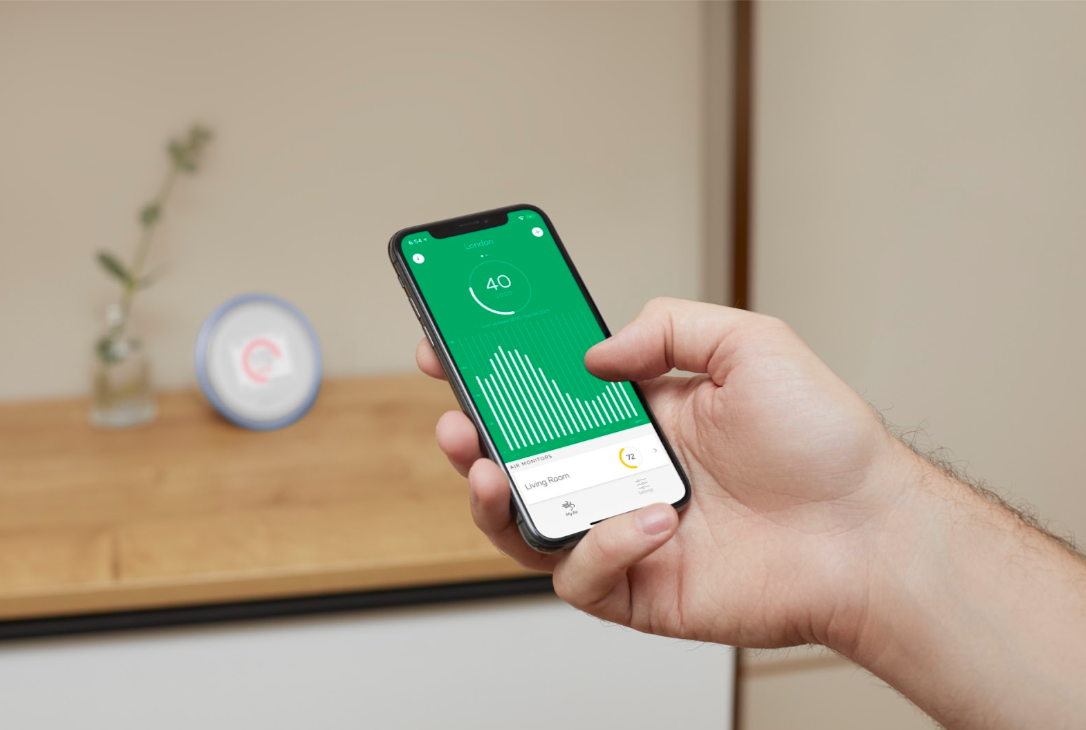How To Identify Sources of Air Pollution in the Home

Does it seem like allergy season has come a bit early this year? Or, maybe you've been getting headaches since your new carpet was installed? These issues and their associated symptoms could be due to air in your home. Homes can generate a surprising amount of indoor air pollution. Even small changes around the home, such as a new pet or cleaning solvent, can have a significant impact on air quality (and our health).
The air we breathe is a delicate balance of a few key ingredients, and many of us don’t realize that even small changes–such as keeping a door closed or using a new type of cleaning product–can completely disrupt this balance. This can lead to headaches, drowsiness, sneezing, and worse.
Your home's air quality may be an issue you are just beginning to recognize. Or, it could be something your family has been struggling with for a long time. Either way, the first step of fixing the problem is tracing the source. Below are some tips for how you can figure out where the pollution in your home might be coming from and what you can do about it.
Pollution Source: Outdoor Air
Pollution levels can fluctuate throughout each season and each day. You may notice that the pollen count increases in the spring, or maybe that during rush hour there’s more smog outside. You can’t control outdoor pollution, but you should know that it can impact indoor air quality to varying degrees. That means that when you open doors and windows in your home, you may be letting in more than just fresh air—you could also be letting in pollution. By keeping doors and windows closed when the outdoor air quality is poor, you can reduce this source of pollution.
Pollution Source: Poor Ventilation
Pollutants are able to get in if the ventilation in your home is poor or the structure of your home has cracks. Weatherizing your home and making it more energy-efficient can help prevent outdoor pollution from getting inside. The downside of this is that indoor pollution might also get trapped inside. That’s why if you opt to weatherize your home, it is also important to properly install (and maintain) ventilation systems.
Learn about three affordable and easy-to-install products that you can purchase online or at your local hardware store to fill those unwanted cracks around your home. Download our free guide about weatherizing your home to keep outdoor pollution outside (where it belongs). Click the button below to get started:
Pollution Source: Recent Changes In Your Home
Recent changes in your home may be impacting your air quality. Unfortunately, allergies can be triggered by unlikely items and furry friends. Pay attention to any home updates or small changes that could be irritating you. Did you recently get a new pet? Pet dander and fur can contribute to indoor air pollution because pet allergens can stay in the air (and stick to furniture) more than dust or other types of allergens. New carpets, new furniture, new mattresses, even new appliances, can all emit Volatile Organic Compounds (VOCs), in a process known as off-gassing.

It’s quite common for people to believe that if there is air pollution in their home it’s likely coming from outside. The truth is that probably isn’t the case. Here are 5 unlikely sources of indoor air pollution:
- Plants — Wait, what??? Aren’t plants supposed to clean the air? Well, that’s true to an extent, but unless your home has a LOT of plants then it’s unlikely they’re doing much to positively impact your air. Some plants do help clean the air, but if they have flowers and release pollen then they could also act as an allergy trigger and add to indoor pollution. If you’ve recently brought in a new plant it could be a new source of indoor air pollution.
- Air fresheners — The name will seem a bit ironic when you learn that these fragrant smelling items could actually be emitting harmful VOCs into your air. Despite their pleasant smell, air fresheners are something you should consider removing from your home if you live with someone who has breathing sensitivities.
- Cleaning supplies — Again, these are items you probably bought to help keep your home fresh and clean. So, how could it be that it’s causing pollution? They might be good at killing germs and emitting pleasant smells, but most cleaning supplies use harsh chemicals that also emit VOCs. It’s worth using more natural cleaners that keep both your home and your air clean.
- Flooring — Has your home recently undergone a major renovation? If so, the new materials used to update your floors might be the reason you’re experiencing headaches and/or having a hard time sleeping. Many people don’t realize that building materials used to make homes can emit pollutants that often irritate people’s airways.
- Mold — This probably isn’t something that you brought into your home intentionally. However, if there is too much humidity inside then mold spores could be rapidly growing. It can hide in many different places, including dust.
Pollution Source: Dust
Dust is notorious for accumulating in hard to reach surfaces and is comprised of many irritants (including pollen, pet dander, smoke particles, soil...you name it). Keeping your home dust-free can be challenging but it will help to ensure that these particles aren’t continuously floating through your air. Here’s a quick list of places to make sure are dust free:
- Doors and window frames
- Ceiling fans
- Bed frames
- Decorations
- Underneath furniture
Monitoring The Air In Your Home
While you may have some suspicions about where the pollution in your home is coming from, it is difficult to narrow down specific sources without an air quality monitor. An air quality monitor, such as the Laser Egg+ Chemical, has sensors that can measure pollutants such as PM 2.5 and VOCs. That means it can track any outdoor pollution that may be creeping inside or help you understand if new products are emitting something that’s irritating your airways. By using a monitor, you can make more calculated observations about the exact location and cause of pollution. With a monitor and an understanding of how parameters, such as time and location, can impact pollution levels, you are better equipped to identify specific air quality issues and make a plan to fix the problem.

Want to know the details on what makes our air quality monitors different from the rest? Learn about all the technical aspects of how the Laser Egg+ Chemical measures PM2.5 and how we ensure its accuracy.
Tip: Monitor Your Home Air Over Specific Periods of Time
It’s important to observe changes in indoor air quality over time because readings can fluctuate. You may notice there are spikes at specific times of the day. Try and spot patterns as they emerge. They may be correlated with certain behaviors. For example, do you notice an increase when you are cooking? Cleaning? Doing your hair? All of these activities can impact your air.
Tip: Monitor Home Air In Specific Locations
Different spaces in your house are used for different purposes and are likely to have different types (and amounts) of pollutants. That’s why it’s important to monitor the air in more than just one spot. For example, if you have high readings in the kitchen, it may be related to cooking. Or, if your air quality monitor shows high readings near an open window it may indicate that outdoor pollutants are being let in. Most people don’t realize that rooms adjacent to or above the garage tend to have higher levels of vehicle exhaust.

If you are noticing generally high levels in one room compared to another, with no specific source, the culprit may be the carpeting or even the wall paint. Another thing to keep in mind is that if you live in an apartment building, other building residents and their activities can influence the air quality in your home.
If you’re not sure how to get started looking for patterns in your air quality, check out this cheat sheet we’ve put together. It’ll give you step-by-step instructions on how to get the most out of your air quality monitor and ensure that your air purifier is working at the level needed.
Conclusion
The air quality of a home is a complicated issue that isn’t always well understood. Every home has different indoor air quality challenges that depend on location, home materials, and what’s happening inside. The first step towards understanding and managing the air in your home is being able to accurately diagnose the problem. If you are able to figure out what is happening with your air, you can identify the next step and work towards solving the issue.


Dejar un comentario